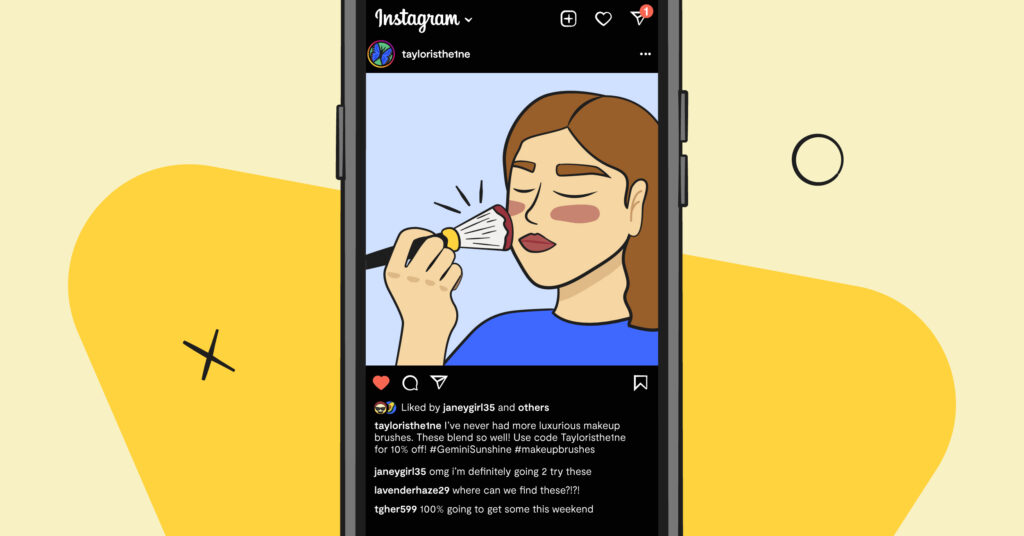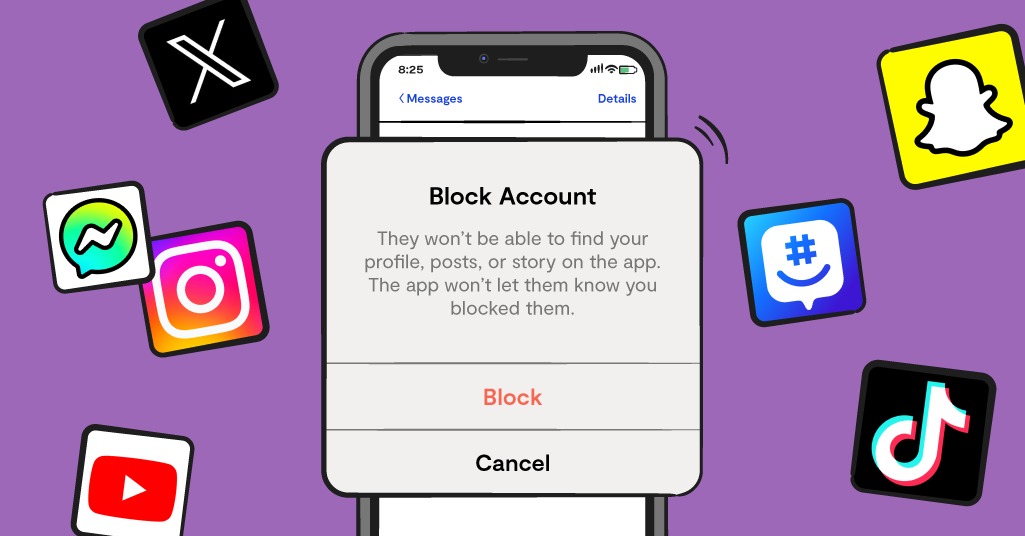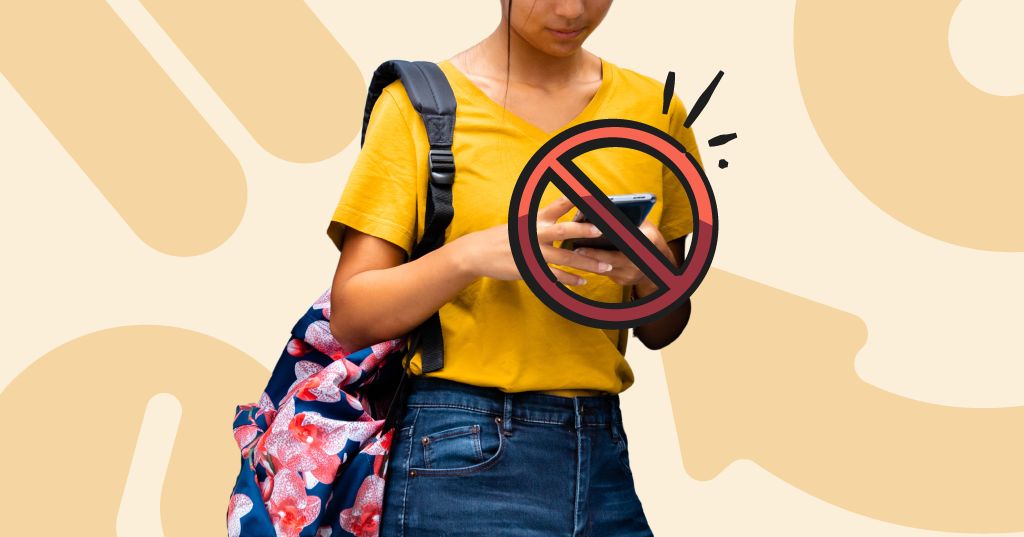
**This blog post was updated on March 29, 2024.**
How does social media affect teens? Social media is a big part of everyday life for adults, but it's also becoming a huge part of kids' lives, too. Because of this, there are concerns about minors' social media use with the rise of a new breed of celebrity: the social media influencer. More than half of Gen Z wants to become one, too.
While much of the research into influencers' impact on children and teens has focused on the negative impacts of social media influencers, the story is not entirely grim. In this blog post, we'll dive into the positive and negative impacts that social media influencers can have on kids.
What is a Social Media Influencer?
A social media influencer is someone who has an online following based on their personality, skills, or interests. In addition, influencers often share snippets of their everyday lives and activities.
Influencers tend to have large audiences and often create sponsored content around products to spur sales — and make money. They can be paid upfront or receive a percentage of profits based on purchases, usually through tracking links. Though paid promotions are generally noted in the hashtags or captions, the content often blends in with the rest of the influencer's content, making it difficult to tell what’s real and what’s sponsored.
Remember: Not all social media influencers are adults. Some minors are also influencers. They develop a following of young people that will grow with them. Instagram, YouTube, and TikTok are the most popular networks for young social media influencers. If your child spends a lot of time on these platforms, there's a good chance they follow several influencers.
Why Do Kids Follow and Respect Influencers?
Children and teens follow influencers for many reasons. Since they spend hours every day in front of a screen for school, entertainment, and social interaction, social media influencers can offer breaks in the day with their exciting content. Influencers can provide information relevant to their audience. Viewing their content can also provide comfort for kids.
There are several types of social media influencers popular with teens. Below is a quick breakdown of the most popular influencer types:
· Music – 38%
· Gaming – 36%
· Celebrity – 31%
· Humor and Memes – 26%
· General and Lifestyle – 24%
· Fashions – 22%
· Beauty – 22%
So How Does Social Media Affect Teens?
The positive and negative impacts of social media influencers
Social media influencers can significantly impact minors, with 70% of teens saying they trust influencers more than regular celebrities. With large platforms and little to no moderation, they can publish content that can be questionable at best and damaging at worst. Despite this, influencers can also positively impact their followers as well. Let's review the potential positive and negative impacts influencers can have on children.
Influencers: the positive
Social media influencers are entertaining
Like all media outlets, we often turn to social media for entertainment, especially when we need a break from daily life. This is true for minors as well. More than a quarter of all teenagers follow humor or meme-based influencers. An even higher percentage follow streamers and influencers that focus on music and gaming. Youth turn to social media for entertainment, replacing magazines and entertainment news shows with a more community-based approach.
Influencers can promote activism
Some influencers can use their social media platforms to spread social awareness. Teenagers often use social media to learn about and explore their interests. Influencers can encourage their audiences to advocate for causes by providing information. They can also give young people the resources and inspiration to engage with their communities.
Influencers can provide company and comfort
During the COVID-19 pandemic, children and teens used social media to fill the void of social interaction when they couldn't see their friends. Teens also turned to influencers to remain positive during difficult times, as many promoted kindness and self-care.
Influencers: The negative
Influencers may expose minors to unhealthy products and themes.
Food and drink companies often turn to social media influencers to promote their products through sponsored posts that show the influencer enjoying the product. Unfortunately, not only can these posts blend into children's news feeds as authentic content, they can promote unhealthy behavior, such as alcohol use or junk food.
Social media influencers create comparisons.
Children and teenagers have enough peer pressure from in-person interactions without adding stress from social media influencers. Since influencers often present a clean, shiny, and fun version of their lives, it can create a sense of comparison for young followers. This increased social comparison has been linked to anxiety, depression, sleep issues, and negative body image among youth.
Social media influencers can promote an unrealistic ideal.
Because of filters and photo-altering techniques, social media posts created by influencers can promote unrealistic body standards. In fact, more young influencers are undergoing cosmetic procedures in return for promotions. These practices further distance influencers from their followers, leaving fans to feel they have to "catch up" to those they follow.
How to Monitor Your Child's Exposure to Influencers
Above, we’ve mentioned just a few examples of the negative impact of social media influencers on children and the consequences it can leave on your child's life and mental health. Since they have become such a large part of our culture, how can you ensure your child is following healthy people? Here are three simple strategies to stay involved.
Follow who they follow
This may seem simple, but following who your child follows on social media is the best way to stay up to date. Take the time to review who your child follows, either by asking them or by viewing their "following" list on their social media accounts. Then follow the influencers they're following. This way, you will see the same content.
Join your child
If your child wants to engage in social media challenges or start posting their own content, be a part of the process. For example, if they want to create dance videos on TikTok, be supportive! This way, you can avoid isolating your child and keep the lines of communication about their social media presence open and friendly.
Use Bark to monitor content and interactions
Monitoring your child's social media can be time-consuming. After all, adults experience the same challenges as minors when it comes to social media and screen time.
With a tool like Bark, you can monitor your child's text messages, social accounts, email, and other apps for issues like depression, cyberbullying, threats of violence, and suicidal ideation.
To stay on top of your child's online life without being invasive, use a tool like Bark to help keep them safe.
Social Media Influencers Are Here to Stay
Whether we like it or not, social media influencers are now a part of life, both for adults and young people. Since these influencers can positively and negatively impact impressionable children and teens, it's important to understand why minors are drawn toward influencers. Talking to your kid about who they follow — and why — can help you learn about their world.
Read more
Bark helps families manage and protect their children’s digital lives.




